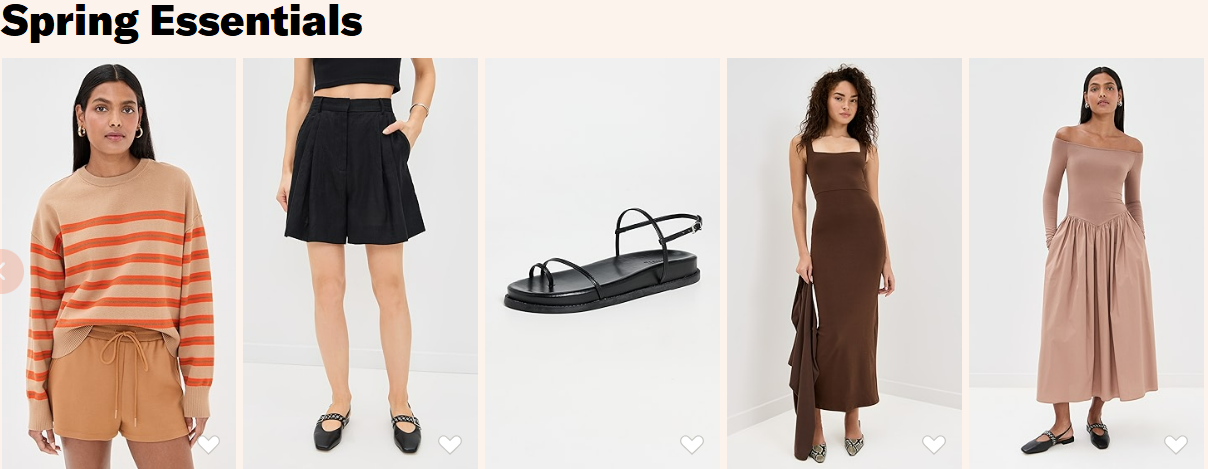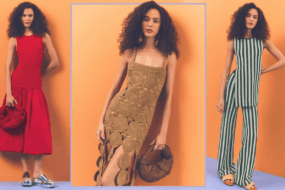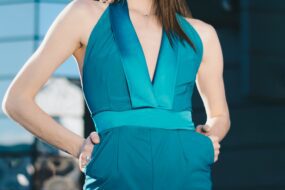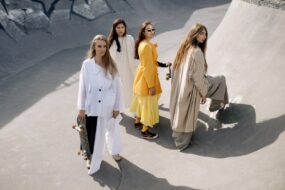
Fashion is an ever-evolving expression of culture, art, and identity. Over the decades, each era has been defined by distinct styles that reflected social movements, technological advancements, and economic changes. From the elegant gowns of the early 1900s to the bold streetwear of the 21st century, fashion has continuously shaped and been shaped by society. This article explores the most iconic trends that defined each decade from the 1920s to today.
The Roaring Twenties (1920s): The Flapper Revolution
The 1920s marked a drastic shift in women’s fashion. The flapper style symbolized liberation, characterized by knee-length dresses, dropped waistlines, and intricate beading. Women embraced bobbed haircuts, cloche hats, and bold makeup. This era’s fashion was heavily influenced by the rise of jazz culture and the post-World War I celebration of newfound freedoms.
The Elegant Thirties (1930s): Hollywood Glamour
The Great Depression influenced the 1930s, making fashion more refined and practical. Bias-cut gowns, high-waisted skirts, and tailored suits became popular, inspired by Hollywood icons like Jean Harlow and Marlene Dietrich. Fur stoles, long gloves, and feminine silhouettes reflected an era that sought glamour despite economic hardships.
The Fabulous Forties (1940s): Wartime Utility and Feminine Revival
World War II brought fabric rationing, leading to utility fashion with shorter hemlines and minimal embellishments. Women embraced practical clothing like high-waisted trousers and structured jackets. However, post-war fashion saw the return of femininity with Christian Dior’s “New Look” in 1947—characterized by cinched waists, full skirts, and a more luxurious aesthetic.
The Rock ‘n’ Roll Fifties (1950s): Youth Culture and Rebellion
The 1950s saw a contrast between elegant, ladylike fashion and the rise of teenage rebellion. Women embraced full-skirted dresses, petticoats, and pastel colors, while young men took inspiration from rock ‘n’ roll icons like Elvis Presley, adopting leather jackets, jeans, and slicked-back hair. The era’s fashion was heavily influenced by post-war optimism and suburban culture.
The Swinging Sixties (1960s): Mod Style and Counterculture
The 1960s were a time of revolution in fashion, with bold colors, mini skirts, and geometric patterns taking center stage. The mod movement, led by designers like Mary Quant, introduced short hemlines and shift dresses. Meanwhile, the late ‘60s saw the rise of the hippie movement, with bell-bottoms, tie-dye, and fringe reflecting anti-establishment ideals.
The Disco Seventies (1970s): Glamour and Bohemian Vibes
The 1970s were marked by two contrasting styles: disco glam and bohemian chic. Studio 54-inspired fashion included sequins, wrap dresses, and platform shoes, while the hippie movement carried over from the ‘60s with peasant blouses, suede vests, and earthy tones. Unisex fashion became more accepted, with flared pants and jumpsuits popular among both men and women.
The Power Eighties (1980s): Bold Statements and Excess
The 1980s were all about excess—big hair, shoulder pads, neon colors, and bold prints defined the decade. The rise of power dressing saw women embracing structured blazers and pencil skirts, while men wore oversized suits and flashy accessories. Pop culture heavily influenced fashion, with icons like Madonna and Michael Jackson shaping mainstream trends.
The Grunge Nineties (1990s): Minimalism and Rebellion
The 1990s saw a reaction against the extravagance of the ‘80s, with minimalism and grunge taking over. Slip dresses, baggy jeans, flannel shirts, and combat boots defined street fashion, inspired by bands like Nirvana. Meanwhile, hip-hop fashion emerged with oversized clothing, tracksuits, and sneakers becoming staples.
The Trendsetting 2000s: Y2K Aesthetics and Fast Fashion
The early 2000s were characterized by futuristic Y2K styles, low-rise jeans, crop tops, and metallic fabrics. The rise of fast fashion brands like H&M and Zara made trends more accessible. Celebrities like Paris Hilton and Britney Spears set the tone with flashy accessories, velour tracksuits, and designer handbags.
The Social Media 2010s: Influencer-Driven Trends
The 2010s saw the power of social media shaping fashion trends. Instagram influencers and celebrities dictated styles, from athleisure to streetwear. Brands like Supreme and Off-White popularized logo-heavy designs, while sustainable fashion started gaining momentum. Normcore and minimalist aesthetics also became popular, with simple, clean-cut outfits dominating wardrobes.
The Sustainable 2020s: Conscious Fashion and Diversity
The current decade is all about sustainability, diversity, and personal expression. The fashion industry has shifted towards eco-friendly materials, ethical production, and inclusivity. Gender-fluid fashion is gaining mainstream acceptance, and vintage shopping is on the rise. Comfort-focused styles, such as oversized silhouettes and loungewear, became especially popular due to the COVID-19 pandemic’s impact on daily life.
Conclusion
Fashion has continually evolved to reflect societal changes, technological advancements, and cultural shifts. From the roaring flapper dresses of the 1920s to the sustainable and inclusive trends of today, each era has left a lasting impact on style. As we move forward, fashion will continue to adapt, embracing innovation while paying homage to past influences.






















